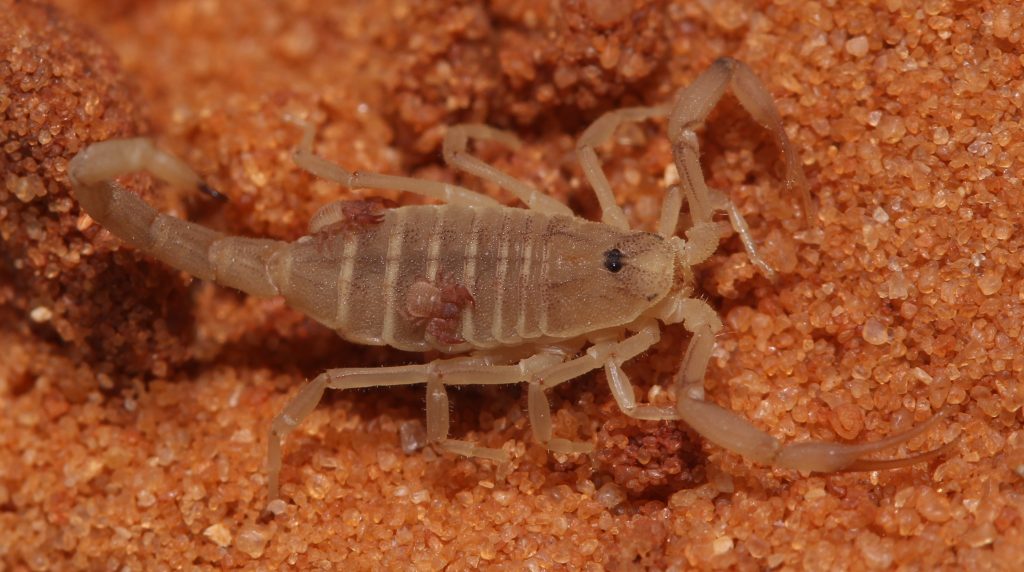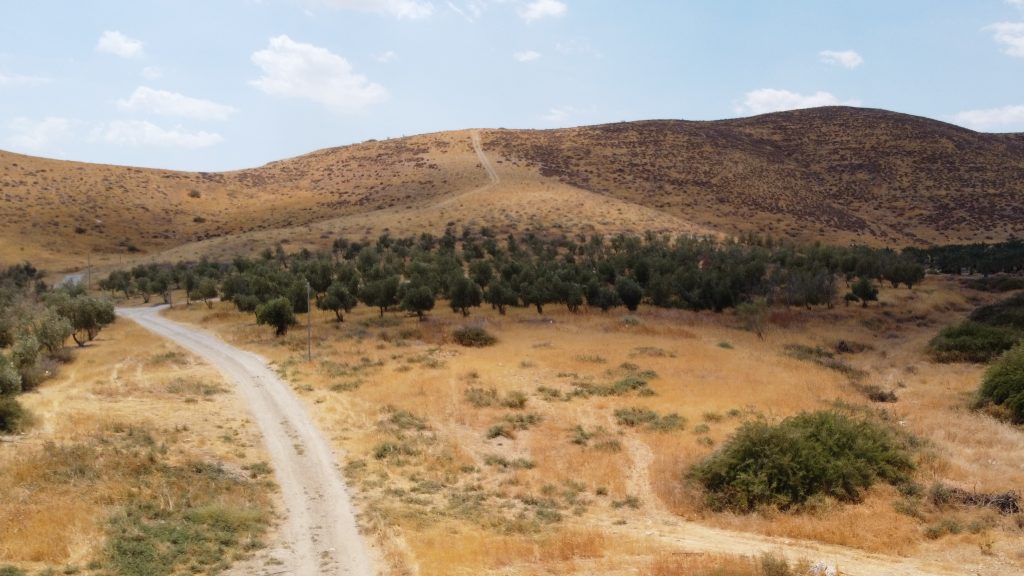
March 18, 2024 — A recent study led by Dr. Sharon Warburg and Dr. Efrat Gavish-Regev from the National Natural History Collections at the Hebrew University of Jerusalem (HU) alongside University of Haifa Ph.D. student Yoram Zvik, documented the first observation of phoresy (a phenomenon where one animal attaches to a host to be taken to new environments) with a pseudoscorpion on a scorpion. The pseudoscorpion Nannowithius wahrmani was observed clinging onto the scorpion Birulatus israelensis. Documented instances of phoresy have been seen in mammals, birds, insects, and even other arachnids.
Nannowithius wahrmani, part of the Withiidae family of pseudoscorpions, encompasses 37 genera and 170 species that can be found all over the world, with a significant presence in tropical and subtropical regions. It was also observed that species within the genus Nannowithius exhibit myrmecophilous tendencies (having positive interspecies associations with ants), often forming a mutually beneficial relationship with ant colonies.

The study conducted was part of an extensive seven-year study, involving field surveys, nest monitoring, and observations in the eastern part of Israel. Over a thousand observations of Birulatus israelensis were documented, with only two observations of the pseudoscorpions species Nannowithius wahrmani on the scorpion’s back during specific dates in late spring.
This groundbreaking observation not only expands our understanding of arachnid behavior but also opens avenues for future research into the intricate world of symbiotic relationships within the ant nest ecosystem. It also prompts further exploration into how pseudoscorpions elude ants, their alternative hosts, and how the arachnids decide to disperse (how they decide to expand the locations in which they live).
The research paper titled “Hitching a ride on a scorpion: the first record of phoresy of a myrmecophile pseudoscorpion on a myrmecophile scorpion” is now available in BioOne Complete and can be accessed here.
Researchers:
Sharon Warburg1, Yoram Zvik2,3, Efrat Gavish-Regev1
Institutions:
1) The National Natural History Collections, The Hebrew University of Jerusalem, Edmond J. Safra Campus, Givat Ram, Jerusalem
2) Hoopoe Ornithology & Ecology Center, Yeroham
3) Department of Evolutionary and Environmental Biology, University of Haifa, Haifa
Related articles
Targeting the “Undruggable”: New Molecular Degraders Offer Hope for Aggressive Breast Cancer
In the battle against aggressive breast cancer, a once elusive target is now within reach—thanks to a breakthrough from a team from the Faculty of Medicine at Hebrew University. Dr. Raphael Benhamou and M.Sc. student Liann Kassabri have developed innovative druglike molecules capable of degrading
The Hebrew University Commemorates 100 Years and Illuminates Jerusalem’s Chords Bridge (Gesher HaMeitarim) Ahead of the New Academic Year
October 27, 2025 – The Hebrew University of Jerusalem (HU) illuminated the iconic Chords Bridge (Gesher HaMeitarim) at the entrance to the city with the University’s emblem, in commemoration of its 100th anniversary and to mark the start of the new academic year on October 19, 2025.
New Molecular Map Reveals How Cells Control Traffic Between the Nucleus and Cytoplasm
October 27, 2025 – An international team of scientists unveiled the most comprehensive model yet of how cells regulate traffic through their nuclear pore complexes (NPCs), the gateway between a cell’s nucleus and its cytoplasm—solving one of biology’s oldest mysteries. The breakthrough,




